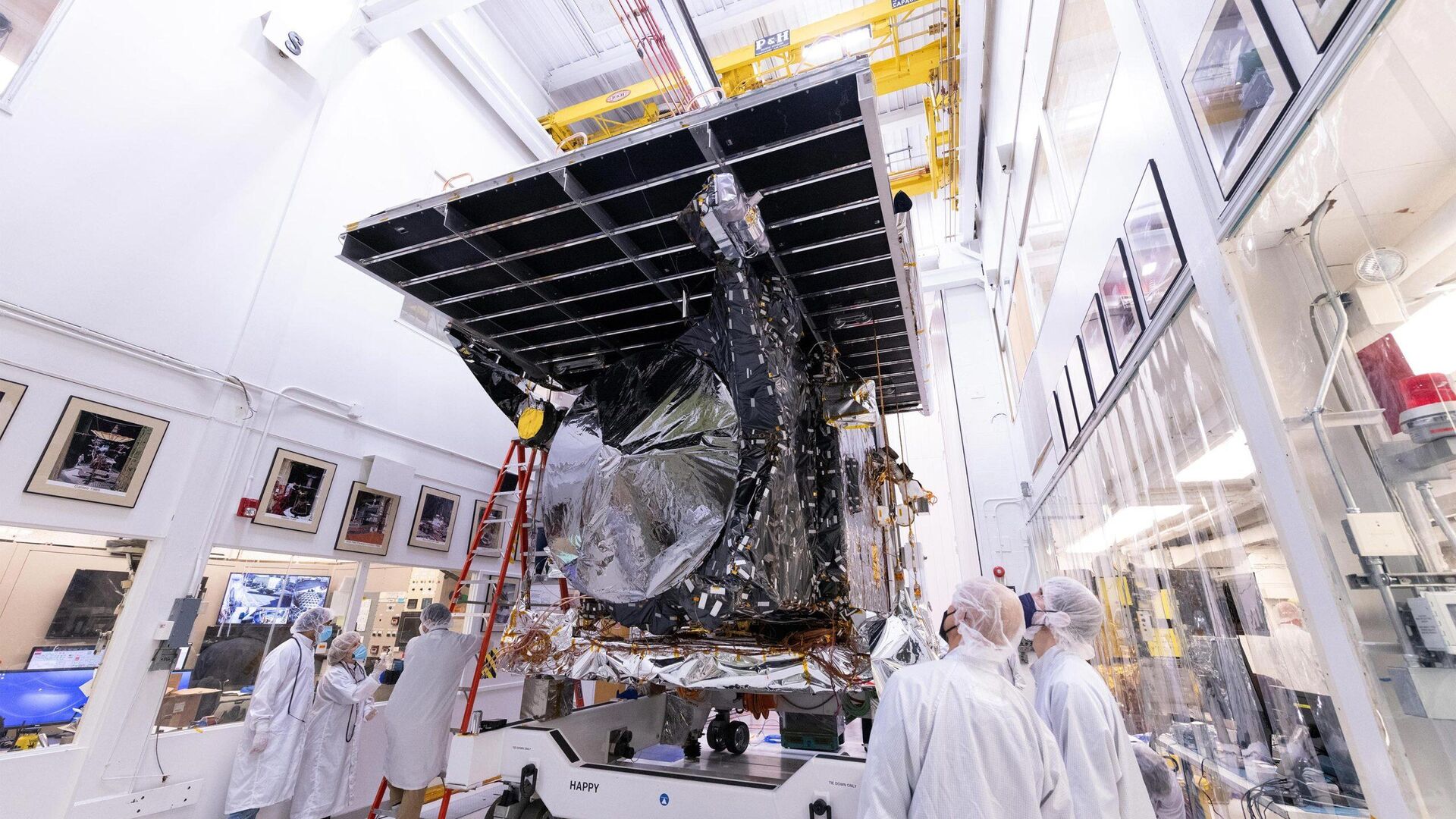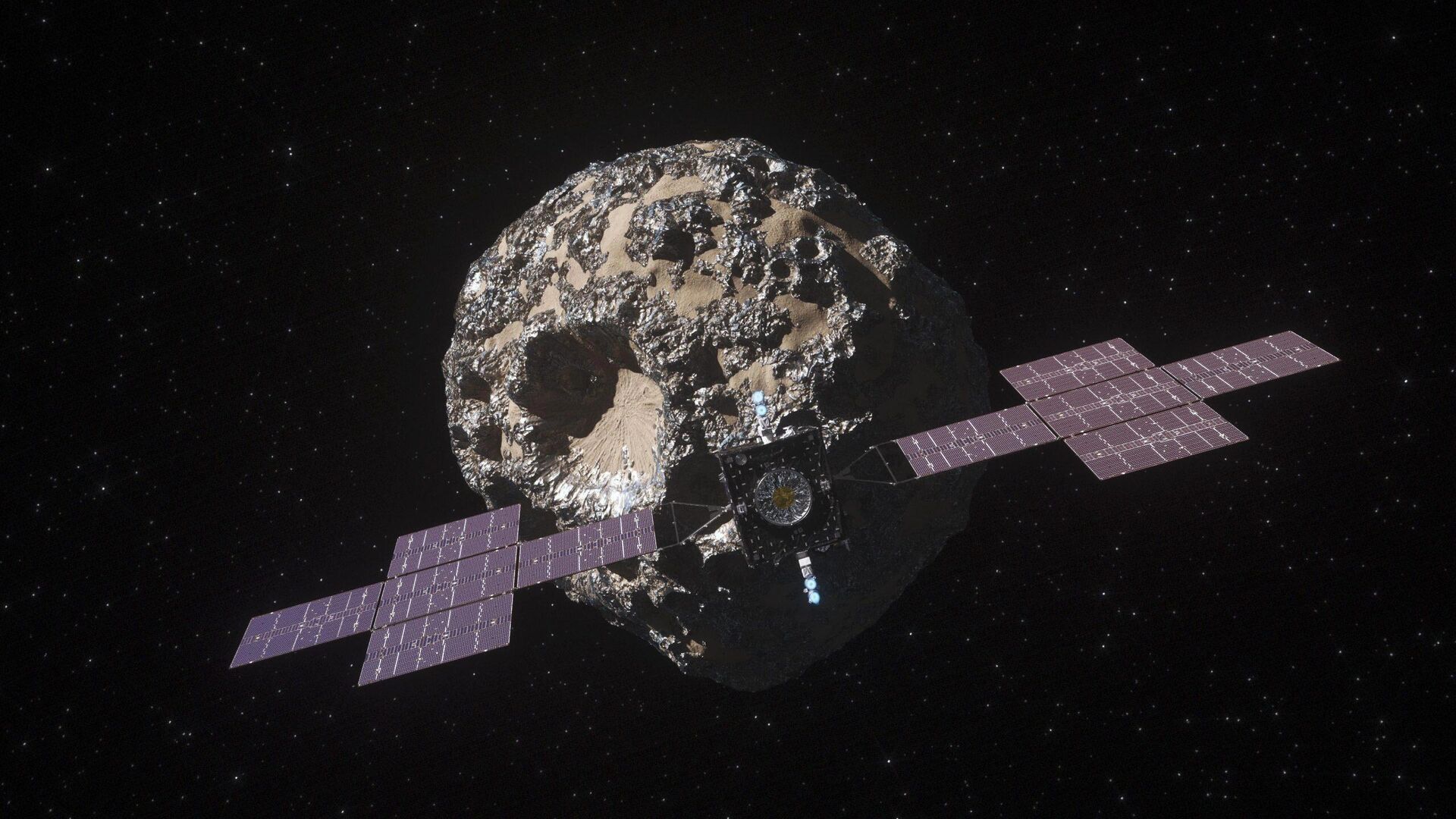NASA’s Psyche Spacecraft Receives Greenlight for Space Flight After Gauntlet of Testing
04:08 GMT 21.04.2022 (Updated: 16:57 GMT 12.04.2023)

© NASA/JPL-CALTECH
Subscribe
NASA’s ‘Psyche’ mission, slated for launch in August 2022, seeks to probe its metal-rich asteroid namesake, which is located in the main belt between Mars and Jupiter. Scientists believe the unusually metal-rich object may have been formed early in the solar system, and could possibly be the core of a planetesimal, or unmelted primordial material.
In preparation for its August launch, NASA’s Psyche spacecraft recently underwent a series of tests to ensure that the yearslong trip will not be in vain due to avoidable flaws in construction.
The spacecraft was ultimately given the green light after undergoing a series of rigorous, and taxing tests, including electromagnetic, vibration, shock, thermal-vacuum and acoustic examinations.
“This is the proof that everybody’s done their job right. Not only those who have brought flight hardware into assembly, test, and launch operations [ATLO] but also the ATLO team in putting it all together,” said Randy Lindemann, an engineer who oversaw the craft’s dynamics testing.
“The tests show that, yes, the spacecraft is flight worthy,” Lindemann added.
The 1.5-billion mile (2.4-billion kilometer) journey to the metal-rich asteroid will be a rough one, as the spacecraft will be launched from Cape Canaveral, Florida and spend nine months sailing through space before passing Mars.
The Red Planet’s gravitational force will then slingshot the craft to Psyche, reaching the asteroid in 2026. It will then conduct a 21-month process of data collection for NASA.
Scientists believe Psyche to be lumpy, and wider across, with its widest point being approximately 173 miles (280 kilometers). Due to its shape, it would likely have an uneven distribution of mass, and some parts may be denser than others.

This illustration, updated as of March 2021, depicts NASA's Psyche spacecraft. Set to launch in August 2022, the Psyche mission will explore a metal-rich asteroid of the same name that lies in the main asteroid belt between Mars and Jupiter. The spacecraft will arrive in early 2026 and orbit the asteroid for nearly two years to investigate its composition.
© NASA/JPL-CALTECH/ASU
“If it turns out to be part of a metal core, it would be part of the very first generation of early cores in our solar system,” Principal Psyche mission investigator Lindy Elkins-Tanton, of Arizona State University, said back in December.
“But we don’t really know, and we won’t know anything for sure until we get there. We wanted to ask primary questions about the material that built planets. We’re filled with questions and not a lot of answers. This is real exploration.”
